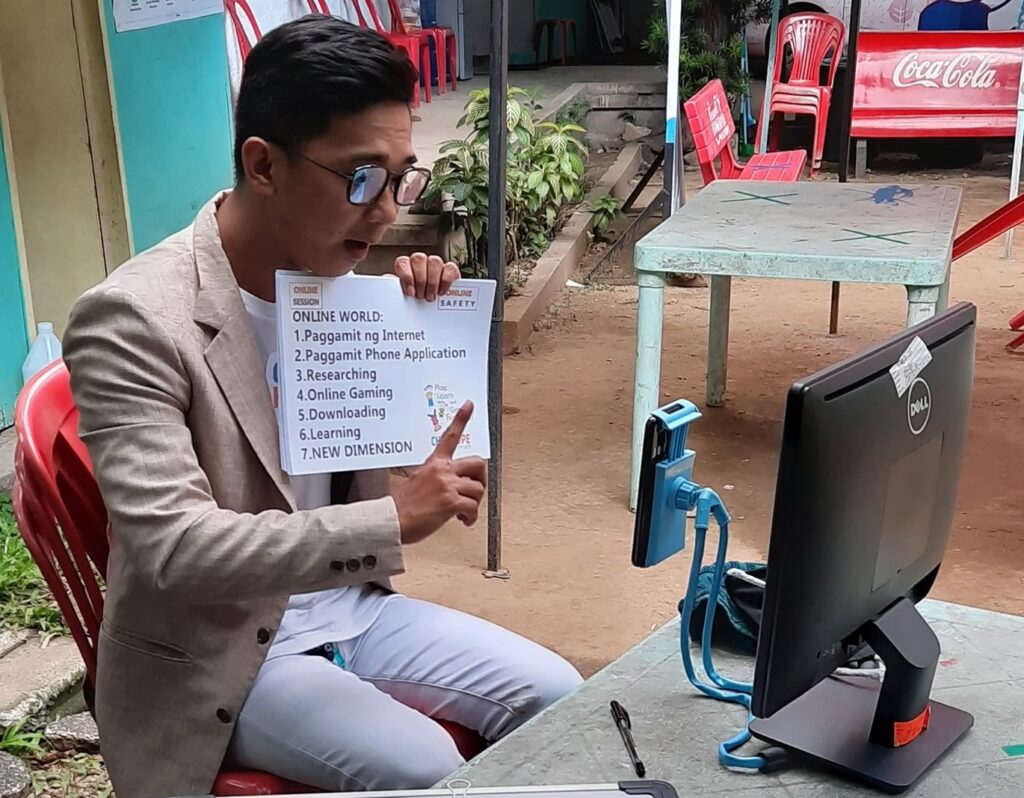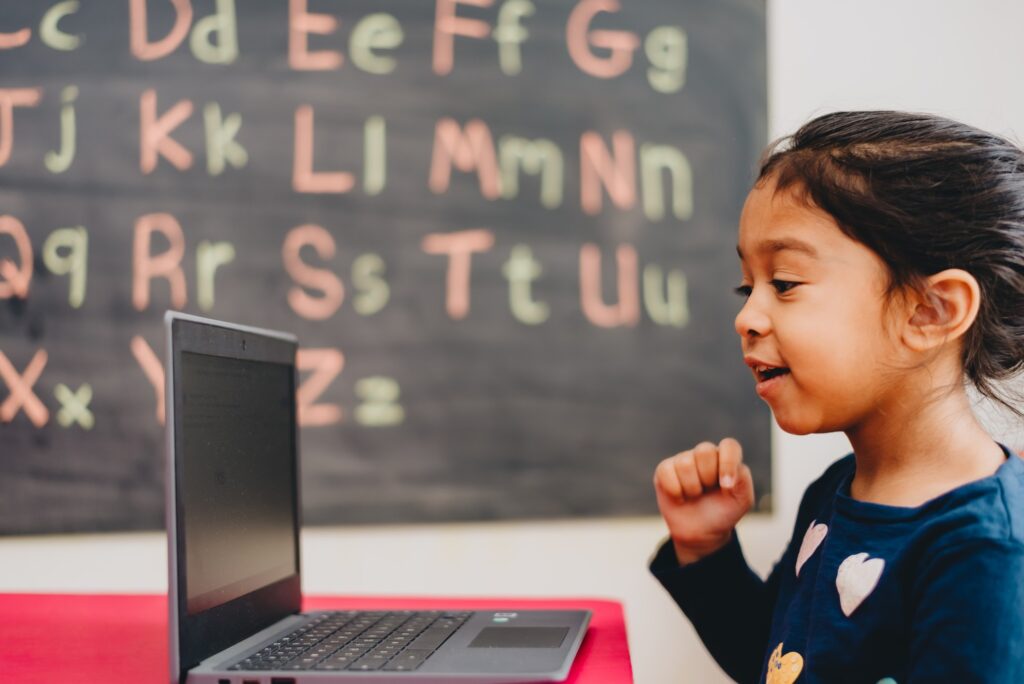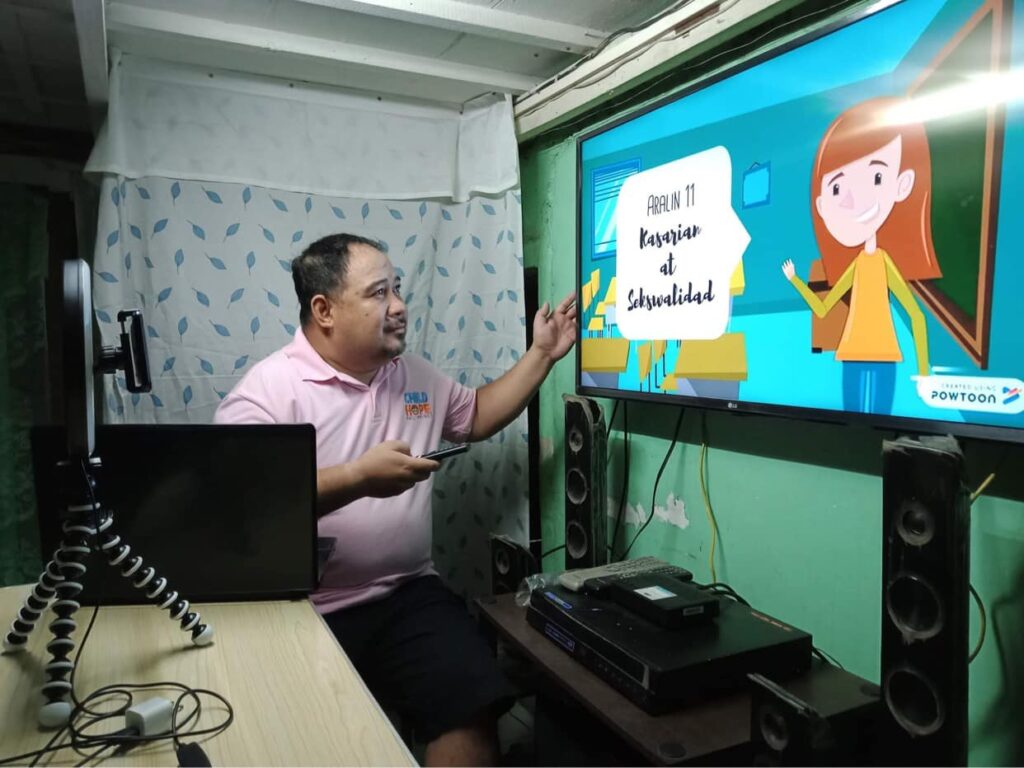“We just pray that KalyEskwela will continue until the pandemic is over and we can go back to school.”
With the COVID-19 pandemic, issues on education in the Philippines have worsened. To address them, the Department of Education (DepEd) has used distance learning modes, while also applying blended learning programs. These include online classes, printouts, and lessons via TV and social media platforms. Although many students and teachers prefer face-to-face classes, they have to adapt to online education as alternative learning. Online classes will continue as schools remain close. However, some of these new learning tools need internet access.
How the Education Sector is Responding to COVID-19
With this pandemic, almost half of the students worldwide remain affected by partial or full school closures. For instance, UNESCO estimates that more than 100 million children will likely have poor reading proficiency because they no longer go to school. For this reason, education should be prioritized to prevent such effects of COVID-19 on learning quality.
Many countries, the Philippines included, have shifted from classrooms to online education through online learning platforms. Even governments have promoted mobile learning as an efficient way through which students continue learning. This push has allowed online learning platforms to flourish.
Several online education platforms offer free access to their services. For instance, BYJU’S provides free live classes on its Think and Learn app. Thus, the number of its new students has increased by 200%. Likewise, Tencent Education offers campus connectivity and teaching. They also provide lesson on research and school management. They cater to individuals and schools that cover K12, vocational colleges, and life-long education programs. With the abovementioned shift, some students and even their parents wonder if online education will still be adopted post-pandemic.
Online Education in the Philippines
In the Philippines, the Department of Education (DepEd) has applied distance learning modalities to ensure learning continuity, which involve technology and internet connection. This way, students can continue their education in remote setups through online/offline platforms, TV and radio, and printed modules. They can access these tools in various ways, such as blended learning and home schooling. In blended learning, any of these modalities are combined to maximize their benefits and achieve high-quality learning. In home schooling, students learn with the aid of a caregiver as their teacher.

Under the Commission on Higher Education (CHED), many universities and colleges have also used flexible learning systems. In such systems, remarkable changes in the learning environment during and after the pandemic are considered. Students can choose from three flexible learning modes: 1) online, which uses available online classrooms for instruction delivery; (2) offline, which involves printed modules or digital media in storage devices; and (3) blended, which combines online and offline modes.
Statistics About the Impact of the Pandemic on Education/Classes
In addition to health systems, education systems have been disrupted by the COVID-19 pandemic. About 1.6 billion students in more than 190 countries are suffering from the closures of schools and other learning spaces.
UNICEF surveyed pre-primary, primary, lower secondary, and upper secondary levels in February–May 2021. It reported how 142 respondent countries monitored and mitigated learning losses. It also presented how these countries addressed the challenge of reopening schools. It also noted how they applied distance learning strategies.
Specifically, this survey highlights the following key findings:
- Countries have used various measures to ease learning losses from school closures. Nearly 40% of countries extended the school year. A similar proportion focused on some subject areas. However, more than half did not adjust their systems.
- Many countries enhanced their health and safety standards at exam centers. Nonetheless, 28% and 18% of the countries cancelled exams at lower and upper secondary levels, respectively.
- Access policies, especially for girls, were neither reviewed nor revised. With this inaction, adolescent girls are unlikely to return to school in low- and lower-middle-income countries.
- Low-income countries lag in terms of their use of even the most basic steps to ensure that students return to school. For instance, only less than 10% of such countries had enough soap, clean water, hygiene facilities, and masks. Conversely, 96% of high-income countries had available similar facilities.
This survey covers the delivery and effectiveness of distance learning. It also tackles the related support after more than a year into the pandemic. Its results are as follows:
- Most countries applied remote learning. Radio and TV broadcasts were common in low-income countries. Conversely, online learning platforms were widely available in high-income countries. However, more than one-third of low- and lower-middle-income countries did not reach even half of their primary school students.
- To ensure engagement, countries must use remote learning strategies suited to a certain context. They should also ensure that girls and other marginalized children can keep up with the majority of students. In addition, 73% of countries assessed the effectiveness of at least one distance learning mode. They suggested the need for obtaining more evidence on the effectiveness of a given strategy in complex contexts.
How the Philippines Fares
Therefore, we should measure learning losses due to COVID-19 and reopen schools. We should also implement remedial learning. We should develop more effective remote learning systems that can be accessed by all students and sustained in future crises.
In the Philippines, children in vulnerable groups have no access to quality education. They also struggle to find distance learning opportunities. According to UNESCO, about 28 million learners are affected by school closures. Unfortunately, the COVID-19 pandemic will severely affect their learning quality without the help of government and nongovernment organizations.

How Childhope Philippines is Responding to Online Education and Learning
To ensure that street children and youth beneficiaries can continue learning during the pandemic and return to school, Childhope Philippines provides digital learning solutions as part of alternative education modules. With the online availability of lessons, teachers are trained to deliver interactive sessions in remote setups. Focus group discussions are conducted after every session via an online group video call to get insights and improve a child’s perception. This way, students can be encouraged to participate, and their learning materials can be enhanced.
Importance of Online Learning
The pandemic has forced everyone to continue having a normal life while staying at home. As such, people have adopted remote setups like home offices and online classrooms worldwide. And with the growing demand for online education, the number of online courses and degrees has likewise increased.
With the new normal, DepEd designed the Basic Education–Learning Continuity Plan. This plan aims to ensure the safety of students, teachers, and staff. It also intends to give quality distance learning by using self-learning modules. These can be accessed through digital forms, radio, TV, and online platforms.
Online classes are flexible learning tools widely used in the Philippines. They are vital because of the following:
- Lessons can be delivered efficiently through technology.
- Lessons and students’ progress can be easily monitored and recorded.
- Students and teachers can interact even if they are not physically present in the same room. They can also participate in conferences in other countries without actually going there.
- Rich and poor students can receive the same high-quality online education at an affordable price.
Indeed, technology is an important part of education. It links students to their teachers amid lockdowns and community quarantine. For this reason, Childhope brings its Alternative Education sessions online. It aims to serve marginalized street children and youth. Thus, more than 300 of its beneficiaries can attend classes online.
Advantages and Disadvantages of Online Learning
Similar to most teaching methods, online learning has its share of advantages and disadvantages.
Here are some advantages of online learning:
- Efficiency
- Affordability
- Accessibility of time and place
- Improved student attendance
- Suitability to various learning styles
Here are some disadvantages of online learning:
- Sense of isolation
- Need for further teacher training
- Poor management of screen time
- Distractions and inability to focus on screens
- Technology, accessibility, and connectivity issues
By understanding the benefits and drawbacks of online learning, teachers can create steps to deliver lessons more efficiently. Thus, they can ensure learning continuity.

Why Online Learning is the Future of Education
Learning has shifted from a traditional mode to online learning. With this shift, online education is considered the reasonable choice. It is so because it can be a useful learning method, while serving as a means to enhance students’ skills. Furthermore, online learning paves the way for future advances in education because of the reasons stated below.
1. It is flexible.
Online education allows teachers and students to have their own learning pace. They can also set a flexible schedule that fits everyone’s agenda. Thus, it offers a way on how to balance work and studies.
2. It provides various program options.
With the vast reach of the internet, students and teachers have unlimited skills and subjects to teach and learn. Universities now offer online versions of their programs.
3. It is accessible.
Through online education, students and teachers can learn and teach anywhere in the world. They can do so even if they are at home. Thus, they save time and money, which can be spent on other important matters.
4. It offers a personalized learning experience.
With online education, students can meet their own needs and skill levels. Many online learning platforms accommodate one student at a time. In this way, each student can better interact with his or her teacher. Likewise, teachers can combine various teaching methods and aids. Thus, they can improve their lessons.
5. It is more affordable than traditional learning.
Online education is more cost-effective than traditional ones. With various payment options, students can easily manage their funds.
According to Anna Abola, commercial marketing manager of Lenovo Philippines, “Transforming education is critical for the development of society. It may seem daunting at first, but if it means that the education of our children will not suffer or take a backseat in the face of disaster, it will be worth it in the end. After all, technology has long been changing the way students are learning, and it is high time to keep up.” She added, “We believe that together, we can overcome the challenges and help students in the Philippines unlock limitless learning.”

How Alternative Education Helped Childhope’s Youth Beneficiary
To help Filipino street children learn even during the pandemic, Childhope has further modified its KalyEskwela Mobile Classroom into a Mobile Community Learning Hub. It gives free access to the internet via WiFi. It also provides gadgets like smartphones, tablets, and laptops. It offers printing and photocopying services. Thus, Childhope ensures that these children have access to these learning tools and technology.
Through the E-Skwela Series Project, Childhope’s street educators tackle health and hygiene topics. These include proper hand washing, vaccination, dental hygiene, nutrition, and proper grooming.
Childhope also had online alternative education sessions on Skills for Life, Life Skill Life Goal Planning, Gender Sensitivity, Teenage Pregnancy, and Adolescent Reproductive Health. In these sessions, 53 out of the 60 target teenagers participated and were able to understand one’s gender. They also learned about how to become socially responsible teenagers by managing their negative emotions and stress. They could also be reliable by applying their goal setting, critical thinking, and problem-solving skills in a crisis.
One of Childhope’s youth beneficiaries is Arvin. He recently graduated from high school with high honors. With the continuous support from various donors, he is taking up a bachelor’s degree in Communication at the University of Caloocan. With a scholarship under Childhope Foundation, he is determined to finish his studies so that he can help his family rise from poverty.
Arvin believes, “I know it’s hard and everyone is adjusting now with a pandemic, but I know that if I can do it, so can you. We just need to study and learn how to keep up with the new flow of life. Believe and trust in your abilities and the people who can help you reach your dream. This is not the end but only the beginning.”
Into the Future of Education: Online Learning with Childhope
As we move forward to the new normal, we urge you to participate in our street education program. You can share your kindness by donating and helping us fund and sustain our programs. You can also give in-kind donations and serve as volunteers. Together, we can be the answer to the prayer of Filipino street children, especially our beneficiaries, as they reach their dreams.
You may join our cause by sharing a bit of your time, effort, and knowledge. You can help by applying as volunteers or donating for the wellbeing of these street children. A little donation from you today can help secure the future of a child in a street situation. Use GCash to support our mission of rescuing and transforming the lives of vulnerable children. Here’s how:
- Click through Pay Bills in the GCash app.
- Search for “Change For 100 by Childhope” in Others!Every peso counts when it comes to creating a difference.
Make a #Changefor100 street kids today
Contact us today to learn more about us, or visit our Facebook page for more.
